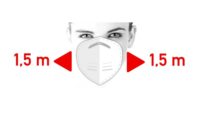New Social Distancing Index Shows Need for Strong Federal Regulatory Program to Flatten the Curve

Openpath's new Social Distancing Index shows national and state levels of compliance with stay-at-home directives to understand employee change in behavior as states have issued stay-at-home requirements.
“We wanted to use our unique position as a provider of building access in a way that might offer insights into the effectiveness of the social distancing efforts activated across the country,” says James Segil, co-founder & president of Openpath. “Based on our findings, it is clear that without a national stay-at-home directive, social distancing on a state-by-state basis is all over the map.”
The index tracks the changes in workplace entries from February 24th, when the federal government first requested $1.24 billion to help combat COVID-19. Since then, the rate of social distancing by state has varied, but it is clear that decreases in building entry activity are most significantly impacted only when states issue a stay-at-home directive.
Openpath says it hopes to help illustrate the impact of public officials and American citizens working together towards a common goal -- to show the reaction to the social distancing mandate as it is happening, by geography and by industry.
Key findings to date include:
- New York and California were two of the first states to issue stay-at-home directives, with the current numbers for both states dropping rapidly week by week to 13% and 19%, respectively.
- States like Nebraska (99%) and Georgia (63%) are well above the national average of 26%. Nebraska has yet to order a stay-at-home policy, and Georgia only enacted a policy on April 2.
- Across industries, education centers, gyms and places of worship have seen the greatest decreases in building entry. By the week of 3/30, building unlocks in these locations were down to: Education: 10%, Gyms: 10%, Places of worship: 16%
- Manufacturing/industrial workplaces and government continue to see relatively high building entry - -Manufacturing/Industry: 42%; Government 49%
Looking for a reprint of this article?
From high-res PDFs to custom plaques, order your copy today!






